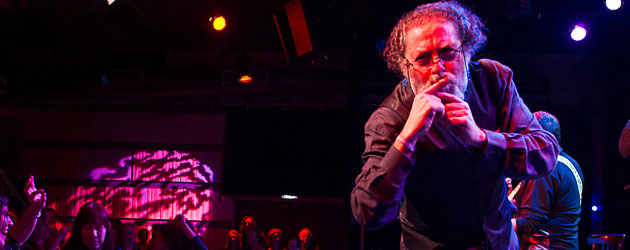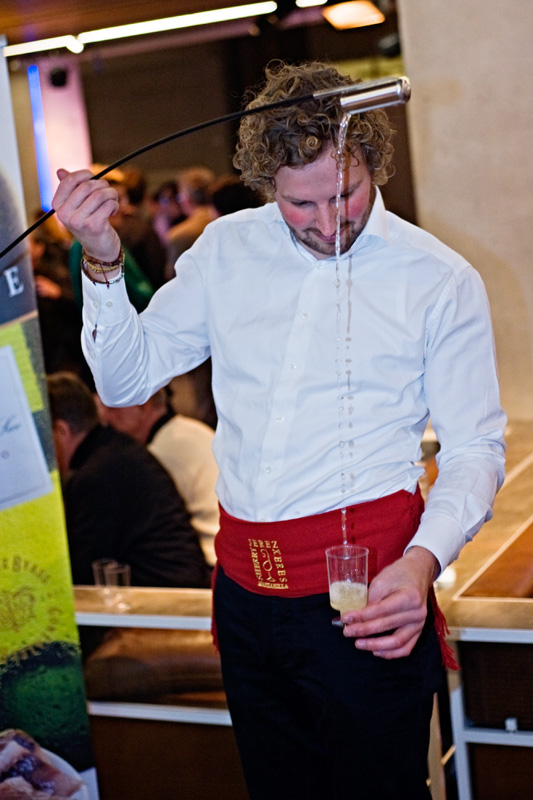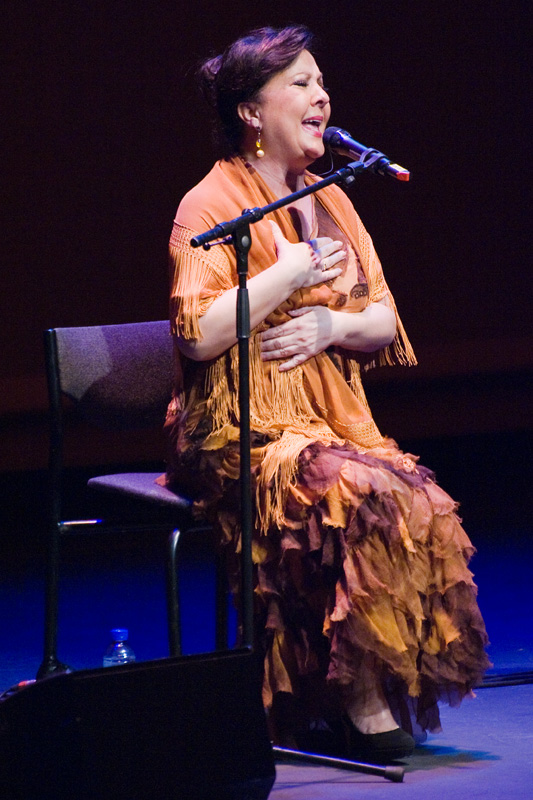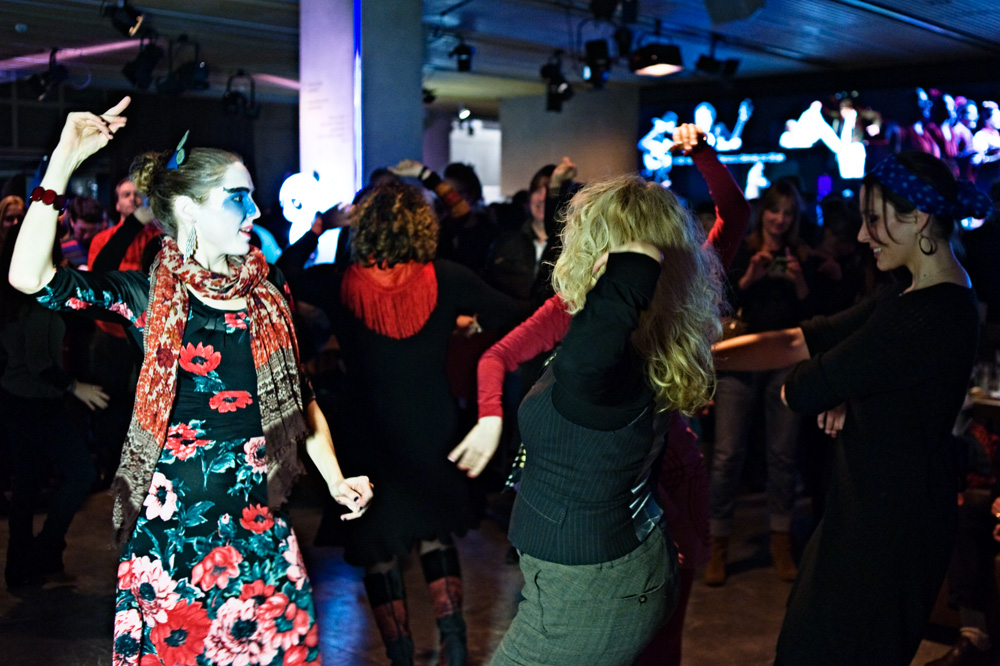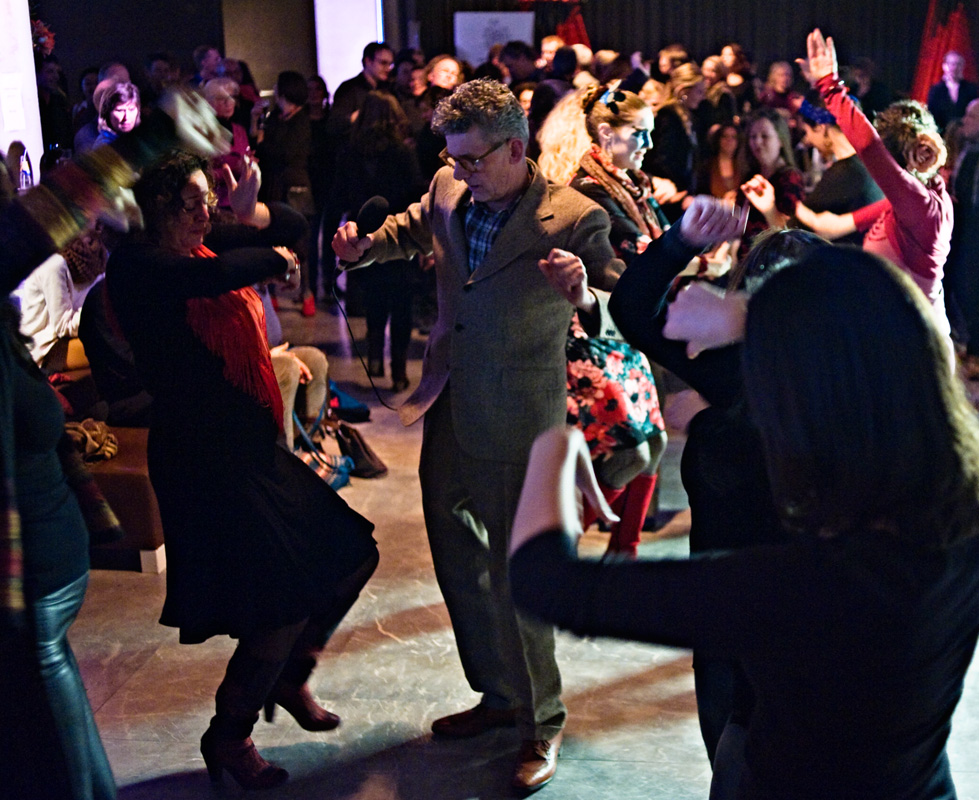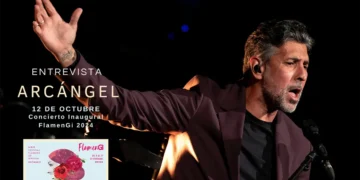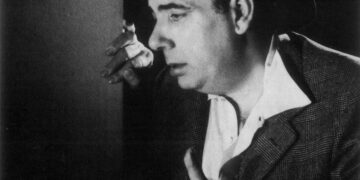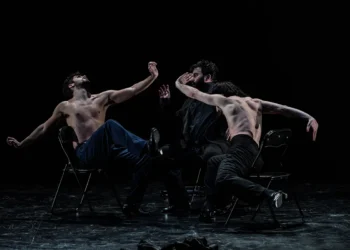Text: José María Castaño
Diego Carrasco, Arcángel, Carmen Linares, Flamenco & Sherry experience
No matter how many times you fly, no one is ever really completely accustomed, and facing a day with two flights is always heavy-going. But if you happen to run into Diego Carrasco and his family at the Madrid airport when you’re changing planes, I can assure you everything is a lot easier to take.
“Where you headed Pepote?” asks Diego.
“Well, it’s not Lebrija!” I answered. “I’m on my way to Amsterdam for the Dutch Biennale. It’s the first time I’ve been to this festival. Moraíto told me a lot about it when he went, and he really enjoyed his stay.”
“Are you going to give a talk or what?”
“Not exactly a talk” I tell him. “It’s a new project called “Flamenco and Sherry Experience”, an educational activity aimed at joining the flamenco culture with the wines of Jerez. We’ll see how it goes! I’ve got some footage of Paquera, Borrico…and wines from González Byass: Tío Pepe and Solera 1847”.
(It’s 2:00 PM at Madrid’s Barajas airport, and the place is packed).
“Olé my hometown…what a great idea…well, Pepito, you can start opening a bottle of amontillado Viña AB for me, in memory of Morao” says old Diego arching his eyebrows in delighted surprise.
[Laughter] “Hey, Diego, the wine’s already there, I would never pass through airport control with 4 cases of wine!”
“Okay okay, when we get there. I just had a call and they say it’s below zero in Holland, ice everywhere, so a little of our own wine will hit the spot, it’s what makes you really sing well” said Diego with that inimitable way of his that permeates his being.
Doctor Kelly is with him (“Castaño, you owe me a fortune in recordings”), and the members of his group: Currito de Juañares, Maloko, Anés Carrasco, Luis de Periquín, Joselete from Musho Gitano and Ignacio Cintado (electric bass).
So the trip was comfortable enough. As we approached Amsterdam’s Schipol airport, our worst fears were confirmed. On descent we could see the great white blanket of snow that covered the entire city of canals, many of which were frozen.

For someone from Jerez, it’s like being plunked down in the middle of Siberia without so much as a Saint Bernard with the little barrel of brandy around its neck.
And I thought: “Nothing is going to save us from this weather, not even our Tío Pepe, Andalusia’s sunshine in a bottle which I think is the only sun we’re going to see”.
And so it was, the city greeted us with below zero temps. But we would soon feel the warmth of the representatives of the festival organization who took us to the Lloyd hotel, neuralgic center of the event.
Round about seven in the evening the first problem came up. Diego and his crew, including myself, wanted to see the football (soccer) game being played by two Andalusian teams: Betis and Málaga. The solution came quickly. Right in front of the hotel, just across the street, there was a Spanish restaurant with just the right name for a bunch of hungry guys from Jerez: Pata Negra, like the cured ham.
“Olé…!” said Diego Carrasco, with the same enthusiasm as if he’d just crossed the tundra instead of crossing from one side of the street to the other…”I’ve always liked that group of the Amador brothers, and we’ll surely see the Betis team eating the best ham…”.
That’s why I baptized him the “guru” of the tribe. We were received with all the warmth of a bar in Triana with its blue tiles and tapas prepared by a cook from Huelva with family from Jerez, and the owner, from Albacete, who received us with open arms, was happy to put on the sports channel. With the sound turned off, the whole band rehearsed between goals.

Our stay in Holland couldn’t have begun better.
One thing I really liked about the Dutch biennale is the festival atmosphere. Although the theaters are distributed among several cities, everything centers on the Lloyd Hotel, and all the performers come and go from there.
I’ve always believed that this is what makes any music festival great: the intermingling of the people. From one moment to the next you’re bumping into teachers, musicians, journalists and fans who arrive to enjoy the event, and enjoy a place to relax where music can flow forth at any moment.
This was how I ran into Carmen Linares and her son, Olga Pericet, Belén Maya, Arcángel, Diego de Morón, Diego de Amparo (from Son de la Frontera), Faustino Núñez, Flamenco World and many others. Of course, Ernestina Van Noort, the driving forcé behind it all, and her wonderful team with Saskia and Heleen, always attending to every detail.
Although she was very busy, you could see Ernestina was a little sad because it was the first time Moraíto hadn’t come to Holland, he loved being here, and she loved receiving him. She told me how they’d given him a large room with kitchen:
“Right over there…there’s a supermarket, and Moraíto used to go in the morning and buy food and mushrooms, and he’d make food for everyone. What fiestas there used to be in Morao’s room” said Ernestina somewhat sadly.
The following morning was Friday. It was the kind of coldness that makes Andalusians feel like eskimos who’ve had they igloos foreclosed.
In the afternoon I had to work, but not until about 7:00, so I had some free time. I stuck my head out the window and saw the street covered in white, so the idea seemed less appealing. But then I thought that being in a city like Amsterdam, I ought to get to know it.
So I took the number 26 tram which took me to the central station of the city. Even with the cold, Amsterdam is an incredible city in every way. Its street full of people from all over the world, the numerous canals that give it the name “Venice of the north”, the feeling a European capital city, the coffee shops and the cosmopolitan nature of everything.
On the way back, Diego Carrasco and his people went to perform in Rotterdam, so I got ready for my conference to be held in the Bimhuis, a major theater complex with several venues, screening room, restaurants and conference rooms all on one of the city’s great waterways.
And there were waiting for me the first people ever to attend this new undertaking, “Flamenco and Sherry Experience”. Not a wine-tasting, nor a flamenco talk as such. The goal was more to talk about the points of encounter between both cultures, from the historical angle.
The place is spectacular, as are the views. Faustino Núñez was giving a conference next door, and there were 25 people for the first “Flamenco and Sherry Experience”. At the end we offered our Tío Pepe and Solera 1847, and everyone went home happy. Although in my opinion some things need to be polished. I’m not accustomed to talking with a simultaneous translator, and it shows.
At half past eight in the large theater called the Muziekgebouw aan’t IJ (that’s copied and pasted from Internet), Arcángel and the Orquesta of the Accademia del Piacere with Fahmi Alqhai (viola and music director), in addition to the violon of Juan Ramón Lara, the baroque guitar and tiorba of Miguel Rincón, the guitar of Miguel Ángel Cortés, the percussion of Agustín Diassera and the dancing of Patricia Guerrero as guest artist.
Compared to last year at the Bienal de Sevilla, the group was smaller because soprano Mariví Blasco, and the flute of Vicente Parrilla were absent. Nevertheless, it sounded very good. Borrowing a phrase from my colleague Fermín Lobatón (which was the title of a work of Mayte Martín’s), it was authentic “chamber flamenco”.
More than fusion, “Las Idas y las Vueltas” offered an efficient well-constructed musical dialogue with a renewed look, no less cultivated, of flamenco and baroque music. It was a daring venture, but the musicians gave the impression of being well-aware of the limits where stylistic conversation could take place and be enriching. It’s always a happy event when one plus one equals three.
“Las Idas y las Vueltas” focuses attention on colonized América, and the journeys back and forth of hybrid melodies which would later go on to support the architecture of flamenco.
Seeing this show in the company of Faustino Núñez is an added pleasure. He explained how incredibly difficult it is to play the viola da gamba the way Fahmi does (“that instrument is like a fine piece of crystal”), and the journey through chaconas, jacaras, canarias, guarachas and marionas.
“Pepe, welcome to sixteenth century flamenco”, said Faustino during one of the applauses.
Two things I liked a great deal.

For one thing, the perfect compatibility in some numbers, especially the fandangos of that era, with those of today (which Arcángel knows so well), the guajira with the guaracha, the siguiriya with the jácara of Gáspar Sanz…
And on the following day a young Columbian man came to my talk with his wife, a nice lady from Jerez who’d been surprised to have recognized from her childhood several pieces played by the Piaccere group. Apparently they were still fresh in Iberoamerican musical culture.
And this is the best proof of all of the artistic premise of Arcángel’s versatile baroque orchestra, well-accompanied by Miguel Ángel Cortés and the dancing of Patricia Guerrero.
After the “Idas y Vueltas” show, I enjoyed the atmosphere at the bar and was able to chat a bit with Carmen Linares, a real señora.
Back at the hotel, the night was young and Diego Carrasco’s return from Rotterdam with his people was imminent.
But we’ll talk about that tomorrow…
José María Castaño (Ámsterdam, 2013)
Photos: Diego Carrasco: Annemiek Rooymans
Other photos: Martijn Van Hennik



